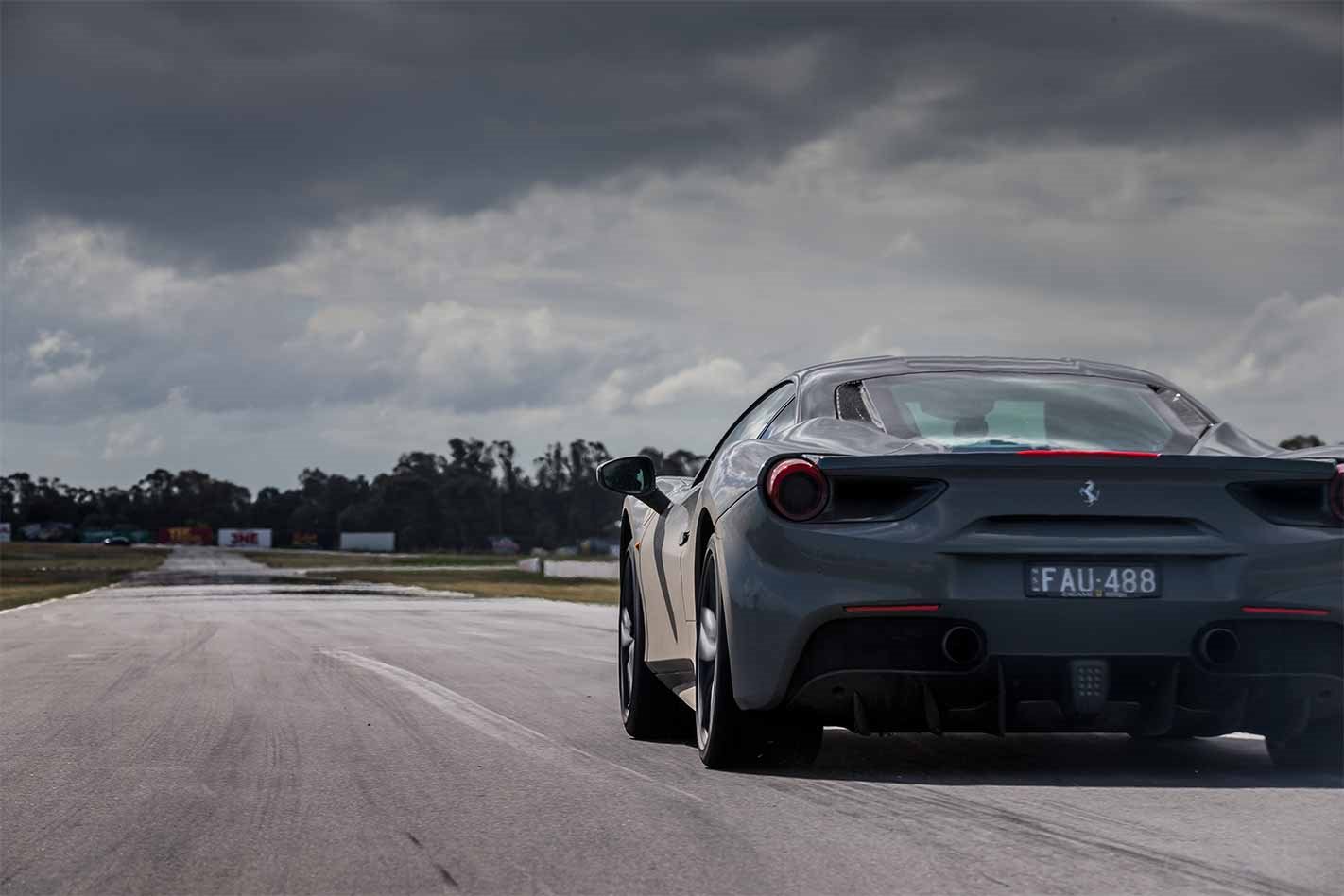Ferrari traditionally doesn’t do comparison tests, and it certainly doesn’t allow independent performance testing of its cars.
Nonetheless, we extended an invitation to Ferrari for the 488 GTB to compete in Performance Car of the Year 2017 and were delighted when it accepted. And why wouldn’t it? The 488 is one of the fastest and finest cars MOTOR has ever driven.
Our condition was that the car would complete every aspect of the competition, including straight-line and track testing, so MOTOR became one of the only publications in the world to conduct independent performance testing on a 488.
This lent a little extra excitement to the process, especially as the 492kW/760Nm 488 GTB’s acceleration claims are fairly eye-opening: 0-100km/h in 3.0sec, 0-200km/h in 8.3sec.
By way of comparison, the fastest four-door we’ve ever tested, the Audi RS7 Performance, clocked 0-100km/h in 3.37sec and 0-200km/h in 10.95sec, so we’re talking next-level speed here.
The venue was the strip of tarmac running up the middle of Winton Raceway, launching backwards down the track from Turn 11.
The temperature was cool following heavy rain earlier in the day, but the track surface was clean, dry and smooth, if a little colder than ideal for the 488’s Michelin Pilot Sport Cup 2 tyres. The driver was, er, me, and I weigh around 62-63kg for reference.
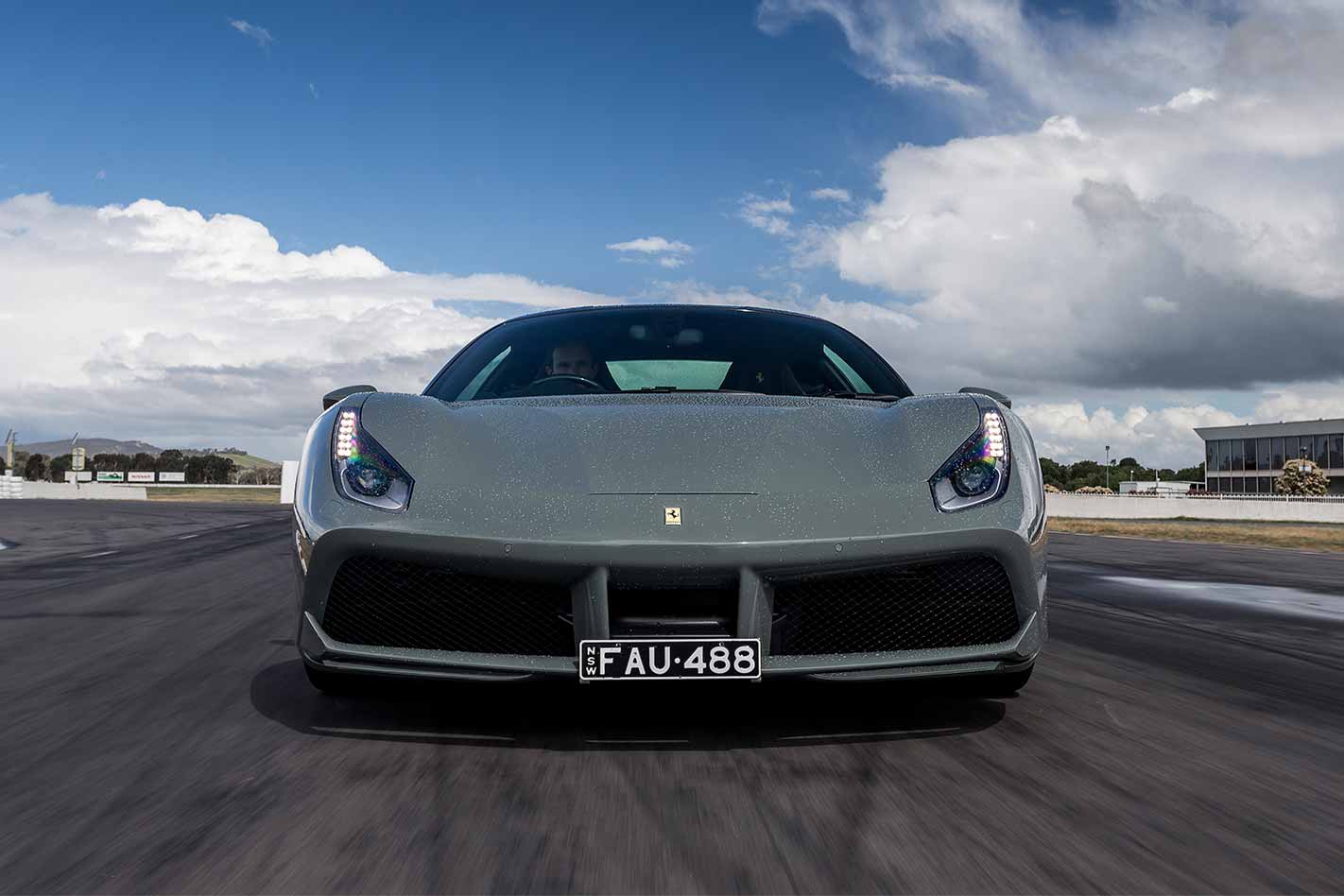
With so much torque from the 3.9-litre twin-turbo V8 it simply set off a furious battle between the engine and electronics, wasting precious tenths in the process, with the ESC light continuing to flash even in fourth gear.
The end result was 0-100km/h in around 3.8-3.9sec and 0-200km/h in the low-10sec range – impressive in isolation but a long way off the claims.
Attempting to use launch control with ESC deactivated was even worse (though more fun) with the V8 immediately slapping the limiter and the rear tyres spinning furiously.
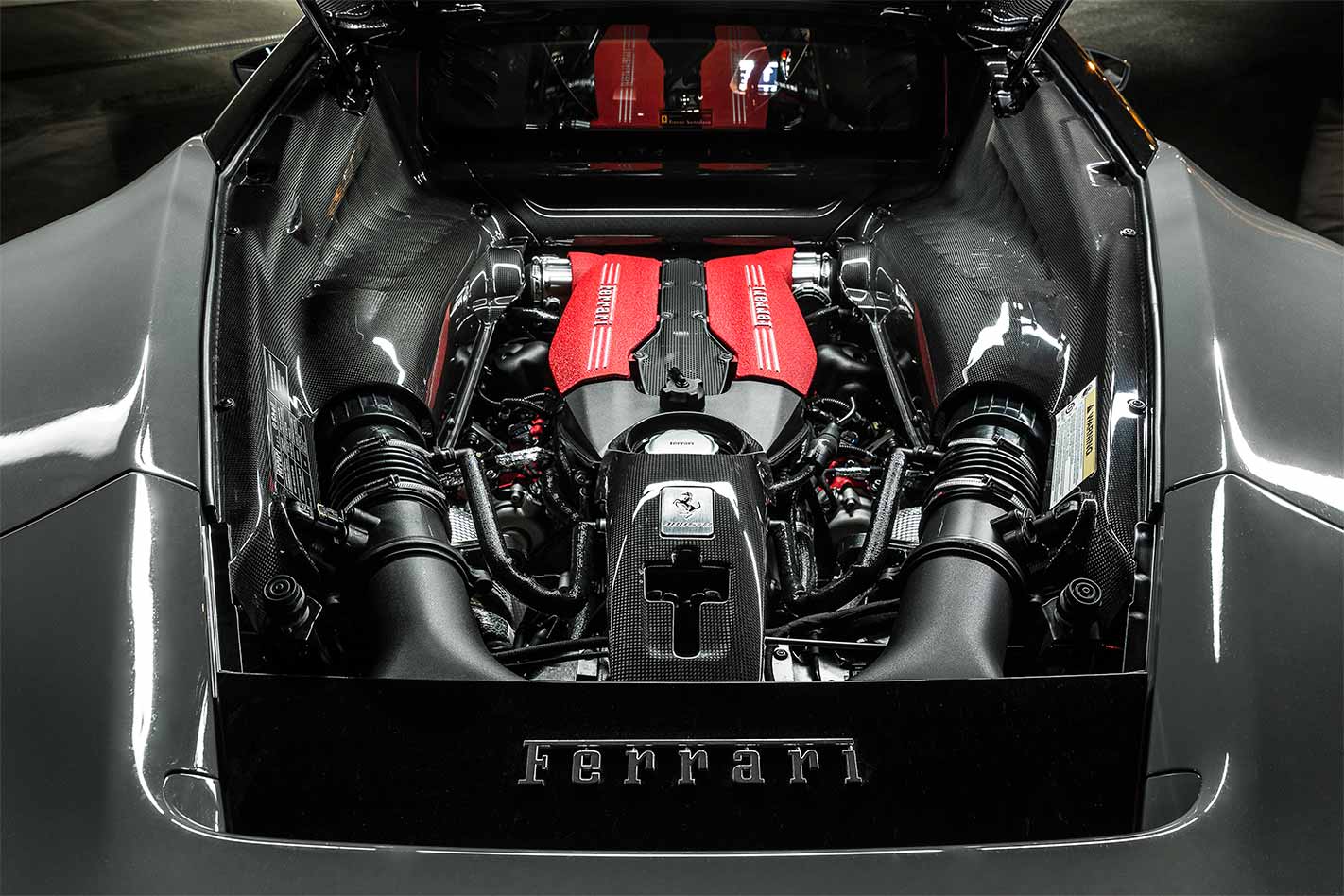
After consulting with the Ferrari people present on the day, in case there was a mode or technique I wasn’t aware of, the only option left was to can the electrics and go it alone.
Getting the 488 off the line cleanly is a delicate balancing act between applying enough throttle to engage the clutches and accelerate quickly without breaking into wheelspin.
Even so, when the engine hits boost the rear tyres immediately over-rotate, though only slightly, and once into second gear traction is absolute, the 488 devouring the ratios as each gear unleashes an extra helping of torque.
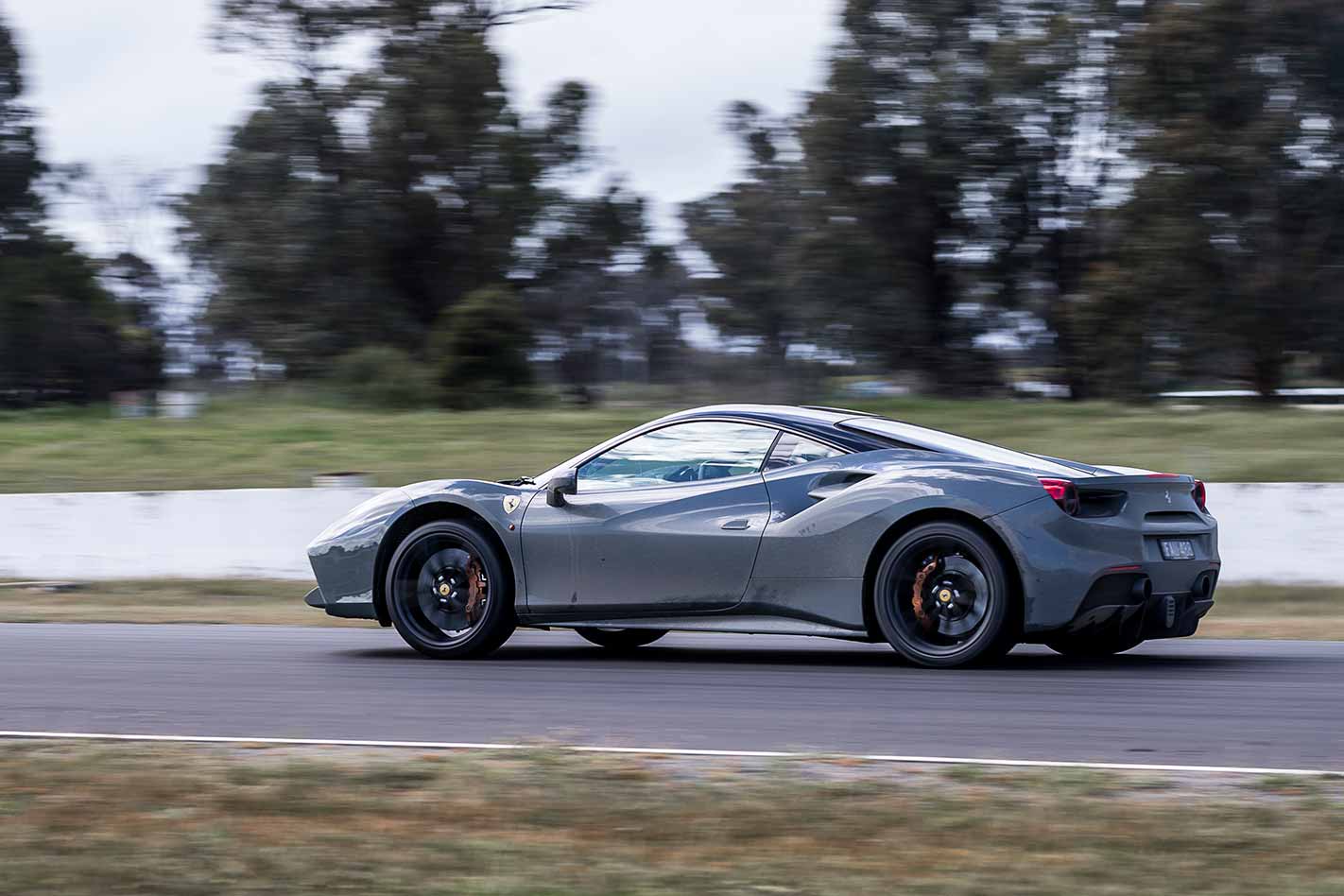
The human approach paid dividends, as after a number of runs experimenting with shift points and trying to minimise the first-gear wheelspin the 0-100km/h time was shaved to 3.3sec, 0-200km/h in 9.6sec and a quarter-mile effort of 11.0sec at a massive 214.4km/h.
The last number shows the true extent of the Ferrari’s speed, as crazy-fast cars like the Lamborghini Huracan and Audi R8 V10 Plus are 5km/h slower across the quarter and something like a Nissan GT-R almost 15km/h slower.
Nonetheless, the 488’s numbers are disappointing, especially the 0-200km/h time, which is 1.3sec slower than claimed.
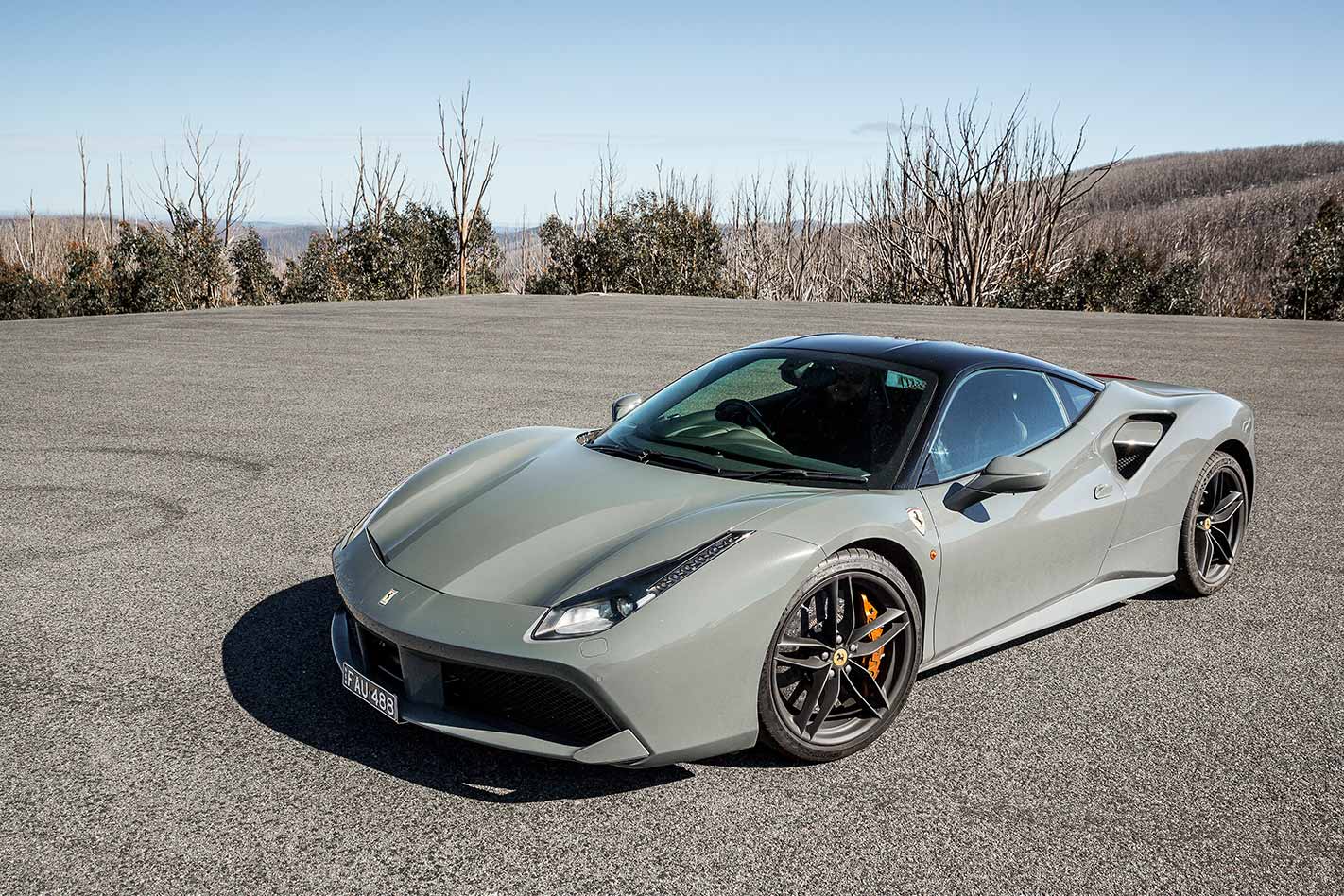
All absolutely true, and the 3.0sec 0-100km/h is certainly feasible under perfect conditions. However, between 100-200km/h there are a lot fewer variables at play – simply keep your foot flat and pull the up-change paddle at the right time – and Ferrari says this increment takes 5.3sec, whereas our testing says 6.3sec. A one-second difference is a lot.
Does this discrepancy matter? In the grand scheme of things, no. It doesn’t make the 488 any less brilliant to drive, and it’s already so fast it’ll make your head spin. In fact, it’s almost too fast already, so were it actually a second faster to 200km/h it would be borderline terrifying.
However, it does show why we go to the trouble of independently performance testing cars wherever possible, whether it be a Ford or a Ferrari.


